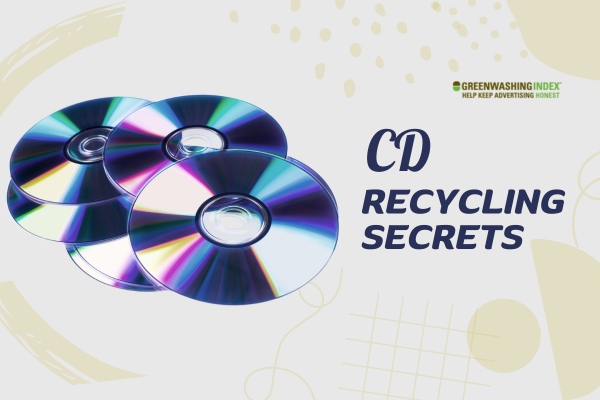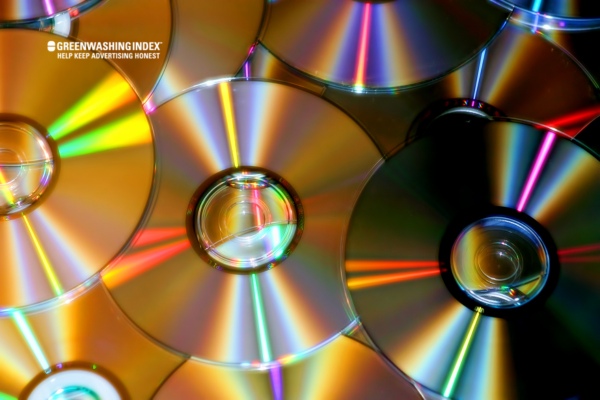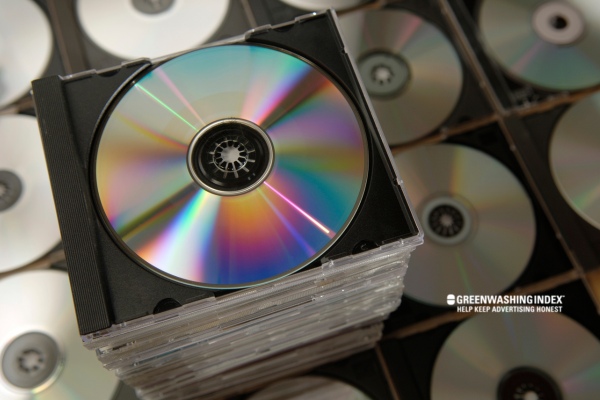

Have you ever thought about what happens to old CDs you throw away? With CD Recycling, turning those forgotten tunes into something new and exciting is easier than ever! Nowadays, we’re always on the lookout for ways to reduce waste and help our planet. Take a minute and imagine giving your dusty old discs a second life – doesn’t just thinking about it make you feel like a recycling superhero? Well, grab your cape because I’m going to show you how easy and impactful it can be!
Transforming old CDs doesn’t have to be complicated. In fact, it’s quite simple. Once you know the basics of safely taking apart CDs and understand which parts can be reused or upcycled, the possibilities are endless!
Whether it’s crafting a shiny mosaic or sending them off to professional recycling services – there are so many eco-friendly options available for those discs that were once staples of our past music experiences.
What You Will Discover Here:
When I think about how technology has moved on, it strikes me that old CDs are just left behind. We had music, movies, and even computer programs on these shiny discs. Now, many of us have left them to collect dust. But here’s the thing: those discs shouldn’t just be thrown away. CD recycling is super important to consider.

Firstly, let me lay out why recycling CDs is a big deal.
Let’s talk about what happens if we don’t recycle these old music buddies:
So there you go – now you know why I say CD recycling matters quite a lot: for our environment and for making better use of what we’ve already got on this Earth! Let’s not forget about all those DIY disc projects waiting out there – upcycling methods turning old tunes into new treasures!
When I start with CD recycling, it’s important to handle the discs carefully. CDs are made of a few different layers, and breaking them down isn’t as simple as it might seem. Here’s the step-by-step process on how to disassemble a compact disc without damaging anything:
Step 1: Prepare Your Workspace
Find a flat, clean surface where you can work comfortably. Make sure you have enough light to see what you’re doing, and put on safety glasses to protect your eyes from any small pieces that might fly up during the process.
Step 2: Separate the Disc Layers
Most CDs have a shiny metal layer and a clear plastic cover. They’re glued together. To separate them, use a piece of tape:
If done right, this should start lifting off that reflective layer. If it doesn’t work at first, try another piece of tape or a different spot on the disc.
Step 3: Remove The Metal Layer
Once you’ve got an edge loose with your tape, gently peel away at this metallic part until it’s completely off. You might need to use more pieces of tape to get it all. Be patient—rushing could crack or break your disc.
Step 4: Clean Up
After removing all that shiny stuff, you’ll be left with just plastic. This is what will be recycled later on! Before moving on, though, make sure there are no tiny bits left behind from that metal layer – these can’t be recycled and should be thrown away separately in your trash.
Now let’s talk about some cool DIY projects for those old discs so they don’t go to waste:
If DIY isn’t your thing or if you just have too many discs lying around that need recycling fast, there are professional services ready to help:
Just check their policies – some might require fees while others operate free depending on where and how much stuff you’re sending.
If you’ve got old CDs lying around and want to get into CD recycling, you first need to know what parts of a CD can be used again. A regular CD is made of several layers. These include:
Each part plays a role in how I recycle my CDs.
Let me break down these layers for you so we understand what can be recycled:
Now that we have singled out these components, let’s talk about how they are actually handled when recycled correctly.
When preparing to recycle CDs safely and effectively, there are some tools I always make sure to have handy:
With these tools lined up on my workbench (or kitchen table), I’m ready to tackle a stack of unwanted CDs without harming myself or losing any bits that could otherwise be turned into something new through CD recycling.
When I think about CD recycling, it’s often a story of success with many happy endings. Let me share the wonderful things that come from giving these old discs a new lease on life.

Do you know that little round disc you used to play your favorite tunes or watch movies? Well, when CDs get recycled the right way, it’s like throwing seeds onto barren land and watching a whole forest grow! Seriously, my friends, CD recycling is key to keeping our planet green and healthy.
Firstly, when we recycle CDs, we save precious resources. Those shiny discs are made from materials that don’t just pop out of thin air – they come from the earth itself. By recycling them, we don’t have to dig up more raw materials. That means less mining and drilling, which keeps Mother Nature smiling.
Also, CDs can take ages to break down if they end up in landfills. We’re talking hundreds of years here! That’s really bad for our environment because they release harmful chemicals as they sit and rot. But with good CD recycling, we make sure this doesn’t happen.
And get this – recycled CDs can turn into all sorts of cool stuff! They might become part of a traffic light or sneak their way into your car as a small piece under the dash. The possibilities are endless!
Now let me be straight – recycling CDs isn’t always smooth sailing. There can be some bumps along the road that need careful handling.
One big challenge is taking those CDs apart because they’re made up of different parts that need separating before being reborn as something new. There’s plastic (a major part), but there are also metals inside, like aluminum or gold!
So, how do people deal with this tricky step? With patience and smarts! They find safe ways to split up each material without causing harm or wasting anything. It takes special machines sometimes, but hey – it’s worth it for our Earth!
We’ve also got to look out for labels on those discs because not everything on a CD can go into the same recycling bin. Those papers might have glues or inks on them that are not friendly to our planet at all when burned or left lying around.
In short, overcoming these challenges is all about knowledge – knowing what goes where and why so that each piece finds its right place in the cycle again.
Recycling CDs is smart; it keeps our water cleaner by causing less pollution and helps keep big piles of waste smaller, too.
So whenever you hear about CD recycling, remember: it’s not only about cutting down waste – though that’s awesome too – but also repurposing with the purpose of an eco-friendly future one shiny disc at a time!
To break down a CD safely, first cover it with a cloth to prevent shards from flying. Then, snap the disc into small pieces. Be careful and wear gloves to protect your hands.
Yes, some companies specialize in CD recycling. Look for local electronics recycling programs or online services that accept CDs for recycling.
You can use old CDs for DIY projects like making reflective coasters, creating wall art, or decorating plant pots. They’re great for adding sparkle to crafts!
CD recycling is not just an act of responsibility towards our environment but also a creative endeavor. It bridges the gap between sustainability and innovation, allowing us to reduce our ecological footprint while still indulging in our love for arts and crafts. Taking old discs and transforming them through upcycling methods not only benefits the planet by curbing waste but also provides an opportunity for everyone to engage in eco-friendly technology use.
Taking part in CD recycling isn’t complicated—it’s about understanding the impact of these materials on the environment and making concerted efforts to reuse or repurpose them. Whether you’re a DIY enthusiast or someone passionate about sustainable media, your efforts count!
Takeaway Points:

Don't let aphids, slugs, and caterpillars ruin another plant. Take back control with simple, natural methods that actually work.